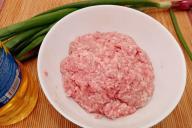Even experienced cooks sometimes end up with a cloudy broth, which spoils the aesthetics and overall impression of the dish.
Luckily, there are several ways to clarify broth that will make it clear and appetizing.
It's worth starting with the basics: proper preparation. To avoid the formation of turbidity, it is important to cook the broth over low heat, without vigorous boiling. This way, fewer proteins coagulate and sediment does not form.

Using cold water at the start of cooking also helps to smoothly transfer proteins and fats into the liquid.
Egg whites are a great way to clarify broth. They act as a filter, catching small particles. To do this, beat a few egg whites until they form a light foam and add them to the warm broth.
Heat slowly, stirring until the whites coagulate and begin to absorb impurities. Then simply strain the broth through a sieve or cheesecloth.
The simplest method, which does not require any additional ingredients, is settling. Let the broth cool down so that the suspended solids settle naturally. Then carefully pour the upper part of the liquid through a sieve.
Adding raw vegetables such as carrots or onions will also help to clarify the broth. Chop them and add them to the pot an hour before the end of the cooking time.
They will absorb some of the cloudy inclusions, while simultaneously enriching the taste. Rice can be wrapped in cheesecloth and left in the broth for 20-30 minutes for a similar effect.
As a last resort, you can use activated carbon as a filter.
Its porous structure effectively captures particles of turbidity. The charcoal should be wrapped in cheesecloth and dipped into the broth, then removed before serving.
A clear broth is not only aesthetics, but also taste. Proper clarification allows you to create a dish that is not only pleasing to the eye, but also saturates with taste.
Using these simple techniques, anyone can turn even the most murky broth into a clear masterpiece.








